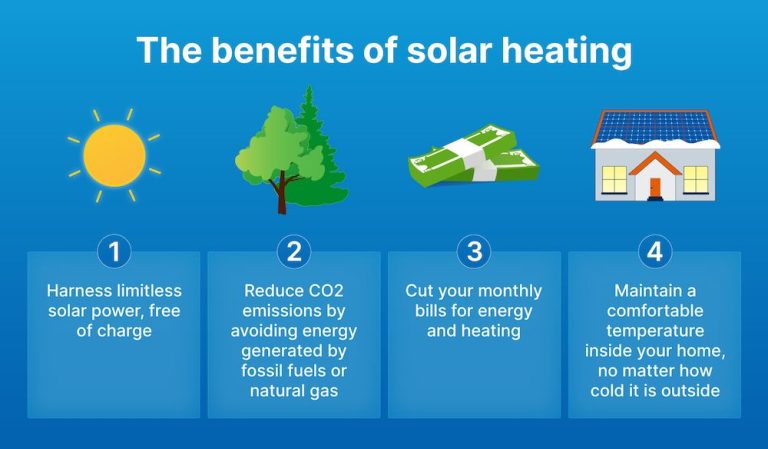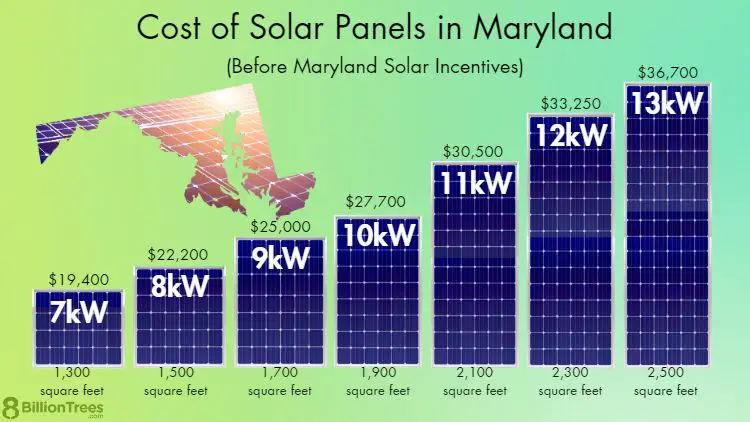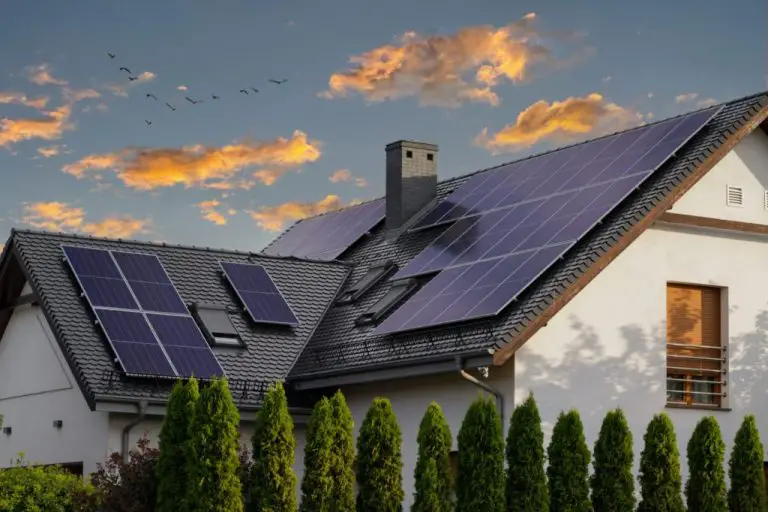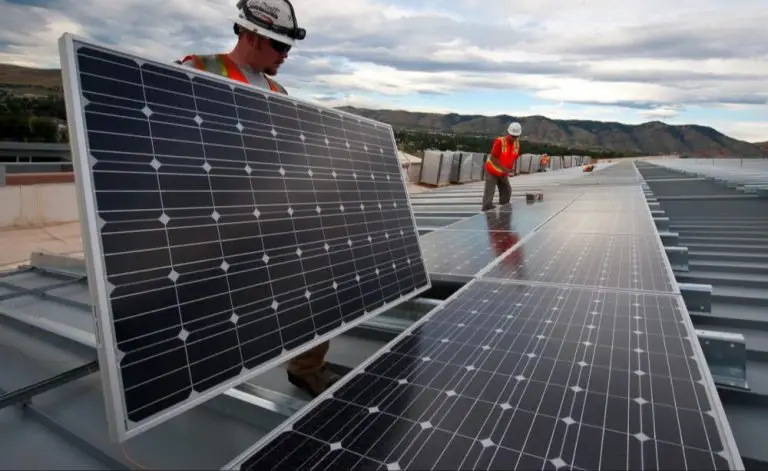Does Solar Power Have Radiation?
Solar power harnesses energy from the sun and converts it into usable electricity. The sun produces radiation across the electromagnetic spectrum, including infrared, visible light, and ultraviolet radiation. While solar panels utilize certain wavelengths to generate electricity, questions sometimes arise about radiation exposure from solar technologies.
This article provides an overview of solar power, how it works, the radiation involved, and the safety considerations. We’ll look at the different solar technologies like photovoltaics and concentrated solar power, examining how they convert sunlight into usable energy. Key questions around radiation exposure will be addressed.
Understanding solar radiation and photovoltaic systems can help clarify any concerns and highlight the safely precautions taken. Overall, solar power systems are designed to avoid hazardous radiation when properly installed and maintained.
Types of Solar Power
There are three main types of solar power technology used to harness energy from the sun:
- Photovoltaics (PV) – PV solar panels use semiconducting materials to convert sunlight directly into electricity through the photovoltaic effect. Solar panels are made up of many individual solar cells wired together. The photovoltaic effect causes electrons in the cells to be set into motion, creating an electric current.
- Concentrated Solar Power (CSP) – CSP uses mirrors or lenses to concentrate sunlight onto a small area, heating up a fluid that is used to spin a turbine to generate electricity. CSP plants use this thermal energy either directly in the form of heat, or to power steam turbines.
- Solar Heating and Cooling – Solar thermal collectors are used to harness energy from the sun to directly heat water or a heat-transfer fluid in residential and commercial applications. This captured heat can also be used to produce electricity in addition to being used for water heating, space heating, or cooling.
These three main technology types all rely on the sun’s radiation to capture its renewable energy, but in different ways. Photovoltaics directly convert photons from sunlight into electricity, while CSP and solar heating indirectly use the sun’s heat to produce power.
How Solar Panels Work
Solar panels contain photovoltaic cells made of semiconducting materials like silicon. When sunlight hits the solar panel, the photons are absorbed by the semiconductors and creates pairs of negatively-charged electrons and positively-charged holes. The electrons, once free, flow along a path and create an electric current. This electric current is what we harness as electricity from solar panels.
The photovoltaic effect that allows solar panels to produce electricity was first discovered in 1839 by French physicist Edmund Becquerel. However, it took over a century before the first modern silicon solar cell was created in 1954 by researchers at Bell Laboratories.
Today’s solar panels consist of many small solar cells wired together into solar modules. Each cell contains two layers of semiconductors – negatively charged on top and positively charged on the bottom. When sunlight enters the cell, the electric field across the layers causes the electrons to flow, producing DC current. The more sunlight that hits the solar panel, the more electricity that can be generated.
Solar panel systems often include inverters to convert the DC output into AC current that can be used for electrical appliances, fed into the electricity grid, or stored in batteries. By harnessing the power of the sun through photovoltaics, we’re able to generate clean renewable electricity from an abundant source.
Radiation from the Sun
The sun emits energy in the form of electromagnetic radiation. There are different types of solar radiation based on wavelength:
- Ultraviolet (UV) – Has shorter wavelengths and higher frequencies than visible light. UV is divided into UV-A, UV-B, and UV-C.
- Visible Light – The part of the solar spectrum that is visible to the human eye.
- Infrared (IR) – Has longer wavelengths and lower frequencies than visible light. IR is divided into IR-A, IR-B, and IR-C.
UV radiation has the shortest wavelengths and highest energy. It is absorbed by the ozone layer but some still reaches the Earth’s surface. Too much exposure can cause sunburn and skin cancer. IR radiation has the longest wavelengths and lowest energy. It is responsible for the warmth that reaches Earth’s surface. Visible sunlight allows plants to photosynthesize and humans to see.
Radiation and Photovoltaics
Solar photovoltaic panels work by converting solar radiation into electricity. Solar radiation from the sun consists primarily of infrared, visible, and ultraviolet light. This non-ionizing radiation does not contain enough energy to ionize atoms and cause cell damage like ionizing radiation can. When the photons from solar radiation strike the semiconductor material in solar cells, they excite the electrons and create an electric current that can be captured and used as electricity.
The photovoltaic effect causes solar radiation to knock electrons loose in the silicon atoms of solar cells. The photons transfer their energy to excite the electrons up to a higher energy state. This frees the electrons from their atoms to flow through the semiconductor material and produce electricity. So solar panels convert non-ionizing radiation directly into electrical energy through the photovoltaic effect.
It is important to note that the low energy radiation from the sun that strikes solar panels does not make the panels radioactive. The solar cells simply absorb the photon energy and convert it into electrical current. There is no nuclear reaction or ionizing radiation involved. So solar photovoltaics produce clean, renewable electricity from sunlight without any dangerous radiation.
Concentrated Solar Power
Concentrated solar power (CSP) plants use mirrors or lenses to concentrate a large area of sunlight onto a small area. The concentrated light is then converted into heat, which drives a steam turbine that generates electricity.
CSP plants do not utilize photovoltaic panels. Rather, they use solar thermal energy to heat a transfer fluid that produces steam. This process does not generate any ionizing radiation that could pose health risks.
The mirrors and lenses used to concentrate sunlight focus only the visible and ultraviolet light from the sun. They do not concentrate higher frequency radiation like x-rays or gamma rays that are ionizing. The process of generating electricity from the sun’s heat in CSP plants does not produce any radioactive materials.
Furthermore, the steam and heat transfer fluids used in CSP plants stay within sealed systems. There is no mechanism by which radiation could escape and expose workers or the public. Routine monitoring at CSP plants has not detected any abnormal radiation levels.
In summary, concentrated solar power plants do not emit radiation that could pose health hazards. The conversion of solar energy to heat and electricity is done through thermal means, without generating ionizing radiation or radioactive materials. CSP plants utilize the sun’s light and heat and do not create additional radiation sources.
Solar Heating and Radiation
Solar water heating systems use solar thermal collectors to absorb heat from the sun and transfer it to water. These systems do not utilize photovoltaic cells, so they do not produce any ionizing radiation. However, the collectors do concentrate the sun’s infrared radiation to heat water.
The infrared radiation from the sun that is captured by solar thermal collectors is part of the electromagnetic spectrum. While high doses of ionizing radiation like x-rays and gamma rays can damage cells and cause cancer, infrared radiation does not have enough energy to ionize atoms and is generally considered harmless at the levels found in solar heating systems.
Solar thermal collectors are designed to absorb infrared radiation safely and minimize exposure. The infrastructure is similar to a standard water heater, just with panels or tubes to collect heat rather than gas or electric heating elements. So there is no increased exposure to hazardous radiation from a solar hot water system.
Proper installation is important, as damaged glazing or tubes could potentially expose users to higher infrared radiation. But overall, solar water heating is considered a very safe technology with no radiation risk when systems are correctly installed and maintained.
Radiation from Other Sources
Compared to other energy sources like nuclear power and coal, solar power emits very low levels of radiation. Fossil fuels like coal contain trace amounts of radioactive isotopes that get released into the environment when burned. Nuclear fission reactors also produce radioactive waste that must be carefully contained.
The radiation emitted by solar panels comes from the sun itself. But the low levels of solar radiation are not in the dangerous ionizing form that can cause cellular damage. In fact, we are exposed to solar radiation every day without ill effects. The radiation from coal and nuclear sources is much more potent and requires significant safeguards to protect human health.
One key difference is that solar radiation is only produced while the sun is shining, while nuclear and fossil fuels emit radiation constantly as a byproduct of their energy generation. The radioactive waste from coal and nuclear also persists in the environment for very long periods of time if not properly disposed of.
So while solar panels do interact with low levels of radiation to generate electricity, the radiation risks are miniscule compared to other energy sources. With proper installation and maintenance, solar power’s radiation footprint is very small and contained.
Safety Precautions
Solar panels produce extremely low levels of radiation that pose little risk to human health. However, there are some basic safety measures to keep in mind:
- Do not stare directly at the sun, even if solar panels are present. The sun itself emits radiation that can damage eyes.
- Avoid touching live electrical components of solar arrays, as contact can cause electric shock.
- Allow proper ventilation around solar panels to prevent overheating. High temperatures can degrade solar cells over time.
- Use protective equipment like gloves and eyewear when installing or maintaining solar panels.
- Keep children and pets away from solar array installations, especially any wiring or electrical components.
- Install solar panels securely, either on rooftops or ground mounts, to prevent any risk of collapse.
- Ensure all solar components meet national and local electrical codes for safety and performance.
With routine precautions, solar power systems present minimal radiation risk while providing clean, renewable energy from the sun.
Conclusion
In conclusion, radiation from solar power is minimal and generally considered safe. The radiation from the sun that reaches solar panels is mostly filtered out and converted into electricity. Any radiation that remains is at low background levels comparable to what we are exposed to every day. Concentrated solar projects utilize heat rather than photovoltaics, so radiation levels are negligible. With proper installation and maintenance, solar power systems pose very little radiation risk. Workers and homeowners should take basic safety precautions, but extensive shielding is not required. Overall, the radiation emitted from solar power is orders of magnitude less than many common appliances or activities. When weighing the pros and cons, solar power’s benefits far outweigh the small and manageable risks from radiation.






